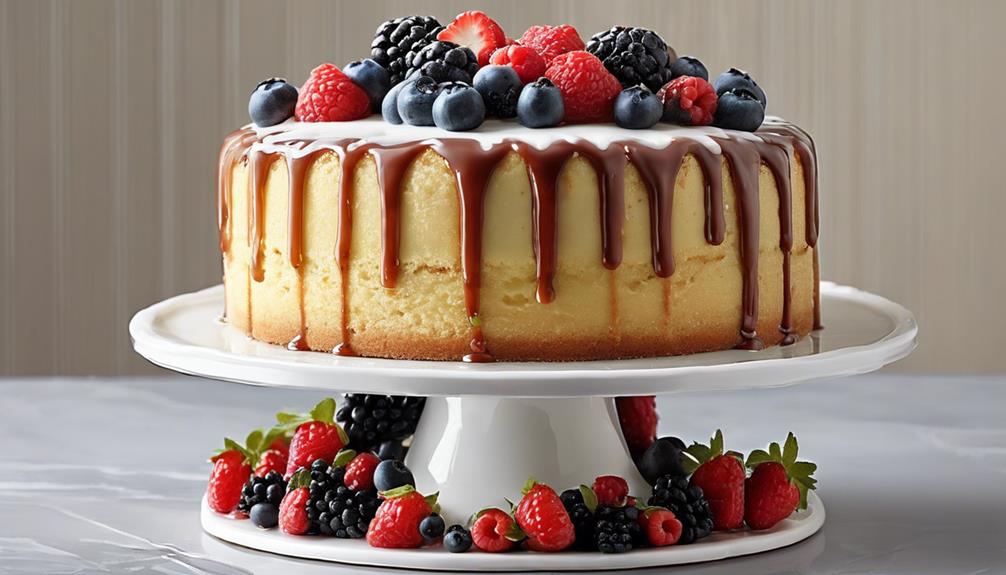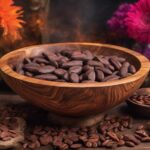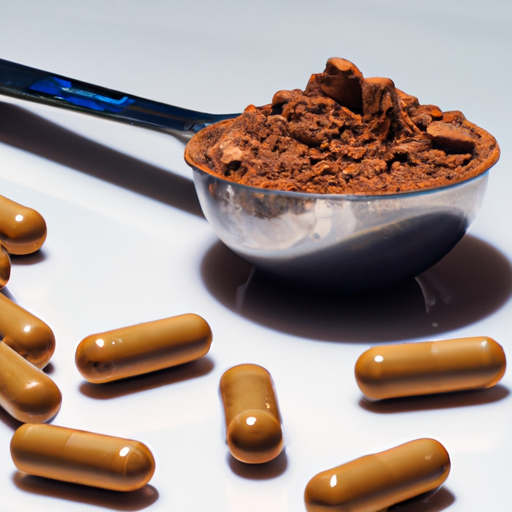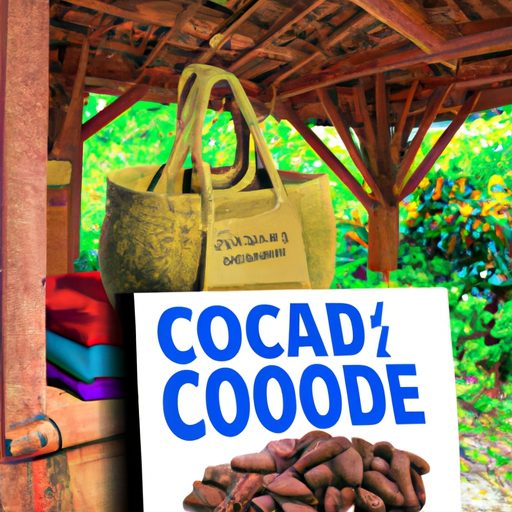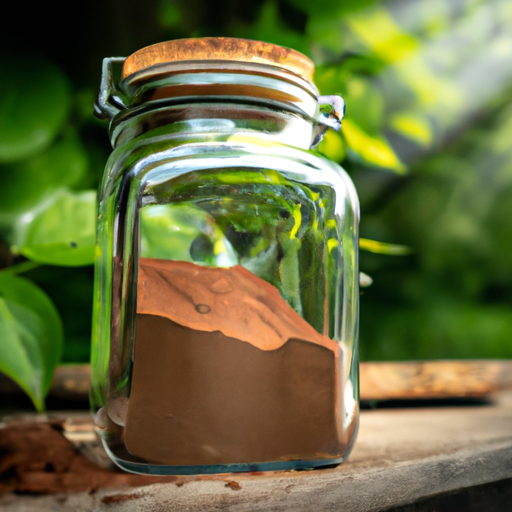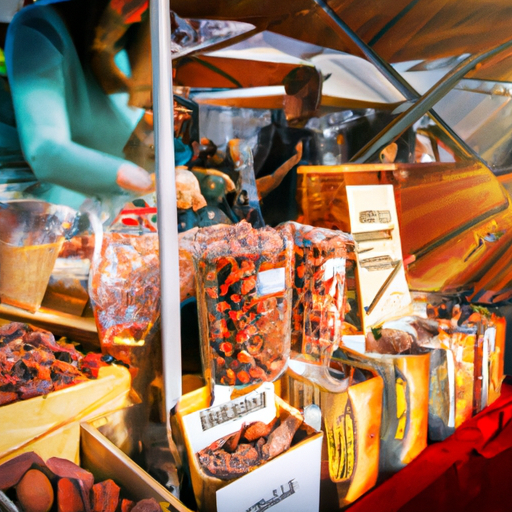Participating in a cacao ceremony involves taking part in spiritual rituals focused on consuming cacao for emotional and spiritual healing, creating a sacred space for a profound spiritual connection led by a facilitator or shaman. Setting intentions, wearing comfortable clothes, and staying hydrated before the ceremony are crucial. The advantages encompass emotional exploration, healing, personal growth, and spiritual understanding. Cacao contains antioxidants, mood-enhancing compounds, and heart-opening properties that promote overall well-being. The link to the full moon boosts emotional release and spiritual growth.
The cacao ceremony has deep roots in ancient civilizations and can lead to improved physical health, emotional balance, and spiritual alignment. Prep involves setting intentions, being physically and mentally ready, and consulting healthcare providers. If you want to learn more, there's a rich historical and cultural significance waiting to be discovered.
Key Takeaways
- Cacao ceremonies offer spiritual rituals for emotional healing and connection.
- Participants set intentions, wear comfortable clothing, and stay hydrated.
- Cacao's antioxidants promote cardiovascular health and mood enhancement.
- Full moon ceremonies enhance emotional release and spiritual growth.
- Ancient Mesoamerican civilizations viewed cacao ceremonies as sacred for self-discovery.
Ceremony Overview
In a cacao ceremony, participants engage in spiritual rituals centered around the consumption of cacao for emotional and spiritual healing. This ancient practice creates a sacred space where individuals come together to experience a deep spiritual connection. The ceremony is led by a facilitator or shaman who guides the participants through meditation, chanting, and group activities. Before the ceremony begins, it's crucial to set intentions for the experience, wear comfortable clothing, and guarantee proper hydration.
The benefits of a cacao ceremony extend beyond the consumption of the sacred cacao. It offers a unique opportunity for emotional exploration and healing, allowing participants to explore their inner selves and connect with others on a spiritual level. Whether done alone, with friends, or in a group setting, the ceremony provides a transformative experience that can lead to profound insights and personal growth. Embracing the ancient traditions of cacao ceremonies can open doors to new worlds of spiritual understanding and connection.
Health Benefits of Cacao
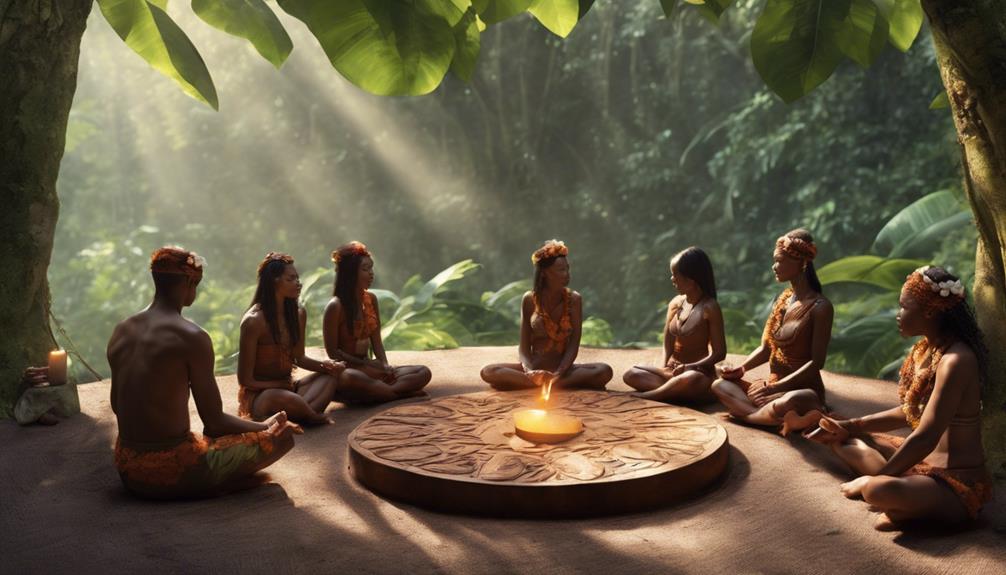
Exploring the health benefits of cacao reveals a wealth of antioxidants, minerals, and mood-enhancing compounds that contribute to overall well-being. Cacao contains powerful antioxidants that help combat free radicals, supporting cardiovascular health and promoting ideal blood flow.
The mood-enhancing compounds in cacao can elevate spirits and create a sense of mental clarity. Consuming ceremonial-grade cacao can have heart-opening properties, enhancing emotional well-being and fostering a sense of connection.
Ancient cultures have long revered cacao for its ability to uplift and energize the body and mind. By setting intentions before partaking in a cacao ceremony, individuals can amplify the benefits and experience a deeper connection to themselves and the world around them.
Embracing the tradition of ceremonial cacao consumption can lead to improved physical health, emotional balance, and spiritual alignment.
Full Moon Connection
During a full moon cacao ceremony, participants embrace the powerful energy of completion and peak emotions to facilitate personal growth and spiritual connection. It's a ceremonial time to let go of what no longer serves us, setting intentions for the future.
The full moon connection enhances our emotional release, paving the way for spiritual growth and heightened awareness. As we gather under the moon's glow, we tap into the peak energy of this lunar phase, symbolizing endings and beginnings. This time of completion allows us to reflect on our journey, releasing any burdens and making space for new experiences.
Through the rituals of a full moon cacao ceremony, we invite emotional healing and a deeper connection to ourselves and the universe. Embracing the energy of the full moon, we open ourselves to transformation and personal evolution, setting the stage for positive change and growth in our lives.
Cultural and Historical Significance
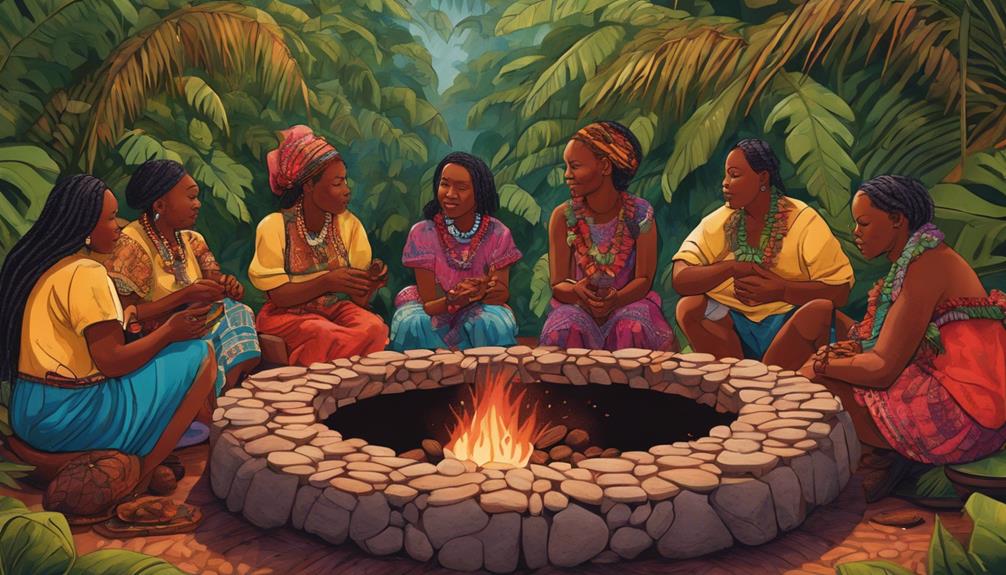
Delving into the rich tapestry of cultural and historical significance, cacao ceremonies trace back to ancient Mesoamerican civilizations like the Aztecs and Mayans. These ancient traditions saw ceremonial cacao as a sacred and heart-opening plant medicine, used in rituals to foster a sense of community and facilitate emotional and spiritual connections.
The Mayans and Aztecs believed that cacao was a powerful tool for accessing the heart chakra, enabling participants to start on a transformative journey of self-discovery and healing. They viewed cacao ceremonies as integral parts of their spiritual practices, where setting intentions for introspection and personal growth was central.
Preparation and Facilitation
Cacao ceremonies are typically prepared by focusing on **setting intentions and ensuring physical and mental readiness, leading into the facilitation guided by experienced individuals. As you prepare for a cacao ceremony, it's important to wear comfortable clothing, hydrate yourself, and eat lightly before the session. Setting intentions is a critical step in the process, as it helps align your mind and spirit for the spiritual practice ahead. Facilitators or shamans play a pivotal role in guiding participants through the elements of a cacao ceremony, creating a safe and sacred space** for exploration. Consulting a healthcare provider before participating is recommended, especially if you have any medical concerns. Below is a table outlining the key elements to take into account when preparing for a cacao ceremony:
| Elements of a Cacao Ceremony | Preparation Tips | Benefits |
|---|---|---|
| Setting Intentions | Focus on your intentions | Align mind and spirit |
| Comfortable Clothing | Wear loose, comfortable attire | Ease of movement and meditation |
| Consulting Healthcare Provider | Check with a medical professional | Ensure safety during the ceremony |
Frequently Asked Questions
What Do You Do at a Cacao Ceremony?
I set intentions for emotional and spiritual healing, participate in guided meditation, chanting, sharing circles, and other activities. Drinking ceremonial cacao can lead to heart-opening experiences, emotional release, and mindfulness. It's about introspection and connecting with my higher self.
Who Should Not Do Cacao Ceremony?
If pregnant, I should avoid cacao ceremonies. Heart conditions, caffeine sensitivity, and certain medications like MAOIs require consultation. Severe anxiety or eating disorder histories may warrant caution due to cacao's stimulating or emotional effects.
What Do You Wear to a Cacao Ceremony?
I wear comfortable, loose clothing made of natural fabrics like cotton or linen to a cacao ceremony. White attire for purity and layers for temperature changes. Avoid tight clothes for energy flow. It enhances my connection and experience.
What Are the Intentions of a Cacao Ceremony?
The intentions of a cacao ceremony focus on emotional healing, spiritual connection, and introspection. Setting personal growth goals guides the ceremony. It aims to create heart-centered experiences, mindfulness, and community bonding, fostering healing and self-discovery.
What is the Difference Between a Cacao Ceremony and a Cocoa Ceremony?
A cacao ceremony is a sacred ritual that honors the spirit of cacao, while a cocoa ceremony is more focused on the enjoyment of chocolate in a ceremonial setting. Both ceremonies share the cocoa ceremony essence of gratitude and intention, but the cacao ceremony has a deeper spiritual significance.
Conclusion
To sum up, participating in a cacao ceremony can be a unique and enlightening experience. It offers a chance to connect with the ancient traditions and cultures surrounding cacao, while also reaping the health benefits it provides.
So next time you have the opportunity to attend a cacao ceremony, don't hesitate to join in and immerse yourself in this sacred practice. It's a journey worth taking, filled with richness and depth.


